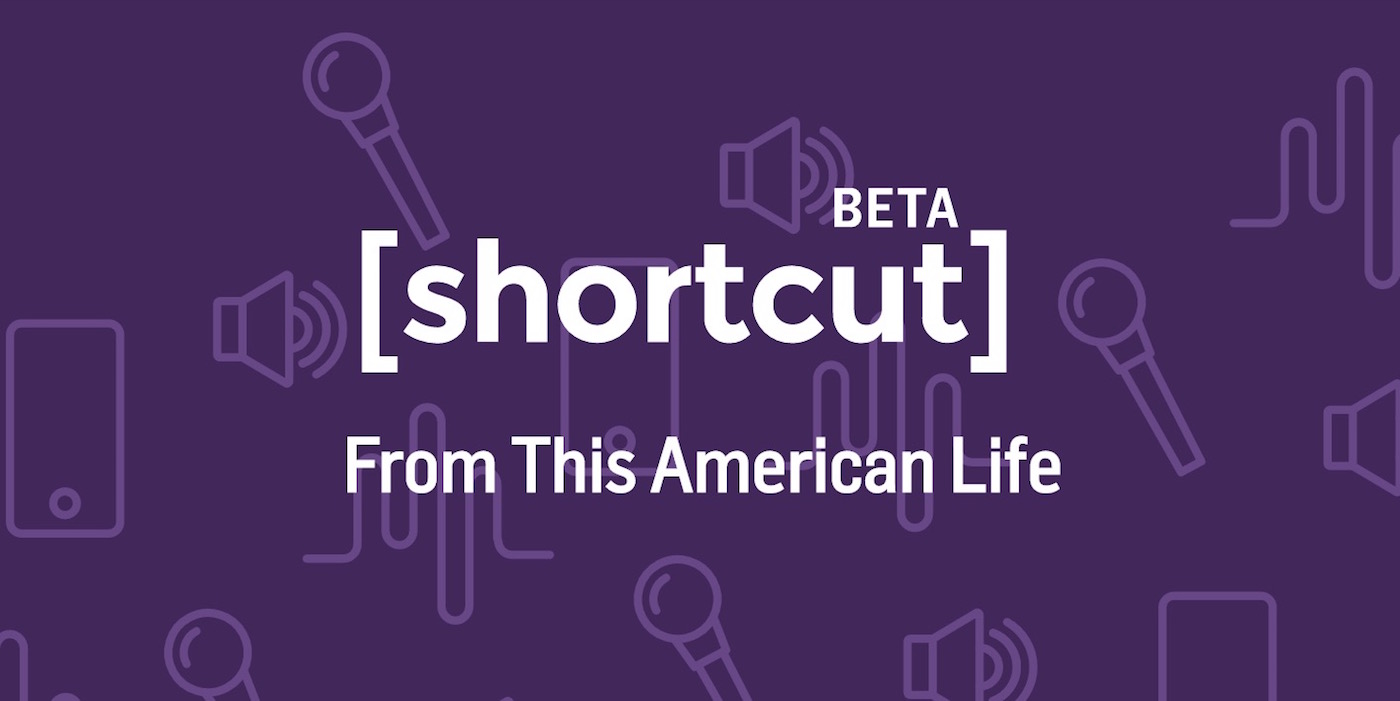
Shortcut, a new tool from This American Life, is the show’s attempt to fix the problem. With the tool, which is available on both desktop and mobile, listeners can select moments from any episode of This American Life (all of which have been transcribed and timecoded) and turn them in short videos that can be shared on Facebook, Twitter, and elsewhere.
“Basically, we wanted to make something that would let people create audio gifs,” said Stephanie Foo, a producer at This American Life and Shortcut’s project lead. “The hope is that it helps diversifies our audience. We want people on social to hear these clips and think, ‘what the hell is that’ and get excited and dive in.”
Foo said that Shortcut, whose development started at an audio hackathon a year ago and which received backing from both the Knight Foundation and the Tow Center, was born in part out of the frustration she felt attempting to explain to her friends what she did for a living, or even what a podcast was. Few were willing to, for example, navigate to the exact moment in one This American Life episode where an interviewee called Foo “China lady,” thanks to the relative friction involved in doing so. “And of course, no one ever did listen when I posted the episodes,” she said. “Who would?” Shortcut has already helped change that.
The This American Life tool isn’t the first attempt by audio producers to make podcasts and radio segments more sharable. WNYC created a similar tool called Audiograms, which converts MP3 and WAV audio files into movie files that can be more easily shared on social. Both The Economist and NPR experimented with the audiogram idea, which has been a successful way to push out audio versions of stories about breaking news and interviews. Apps like Clammr and Chhirp are also built around sharing specific segments of podcasts.https://t.co/Rkxb3lJAKD pic.twitter.com/OcYyHzX61k
— Joshua Benton (@jbenton) October 12, 2016
As with Audiograms, which WNYC opensourced for other creators to use, This American Life also plans to release the code for Shortcut. The tool won’t work exactly the same for other shows, however, few of which have managed to transcribe the entirety of their archives like This American Life has. Those creators will have to rely on Shortcut’s waveform tool to select and share audio clips.
“This is just a first step. Ideally you would have an app that let you listen to a show and do this at the same time. That the dream, but that’s not what we have the resources to make,” said Foo. “This is at least a thought experiment saying that, if you really believe that sharing is broken, you can change it.”